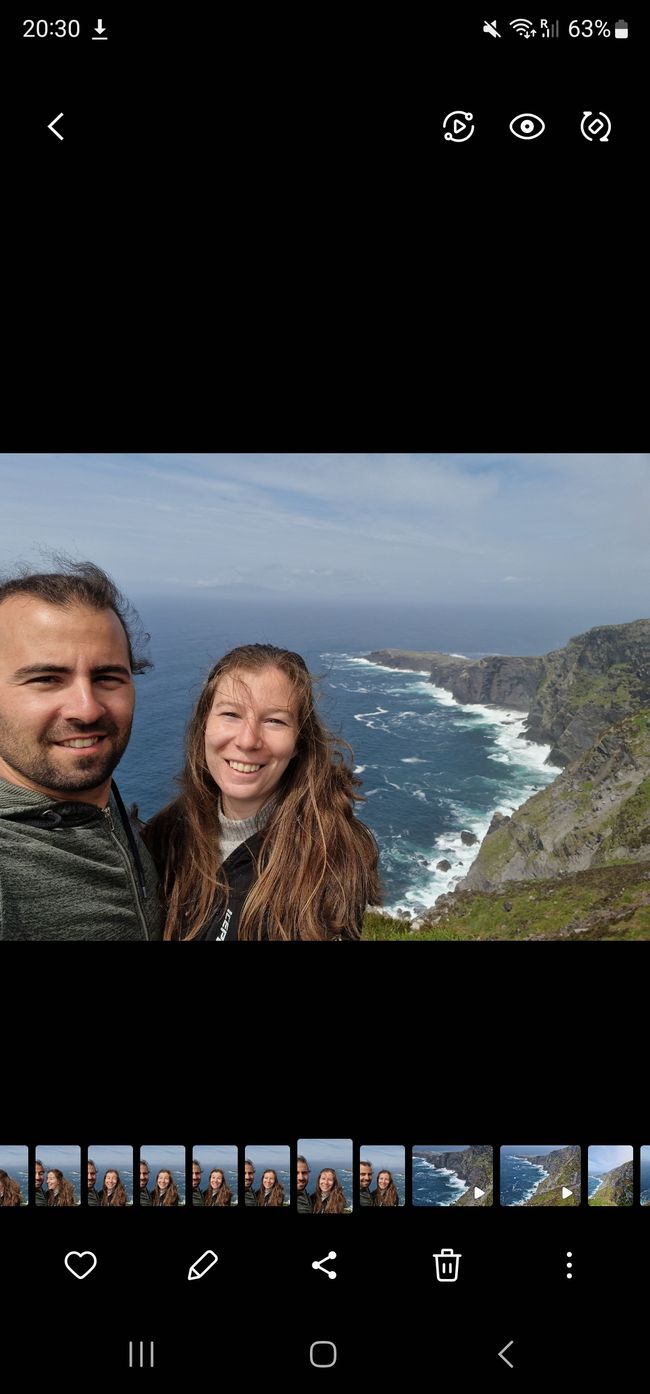In the South / Heading South
Wɔatintim: 14.05.2023
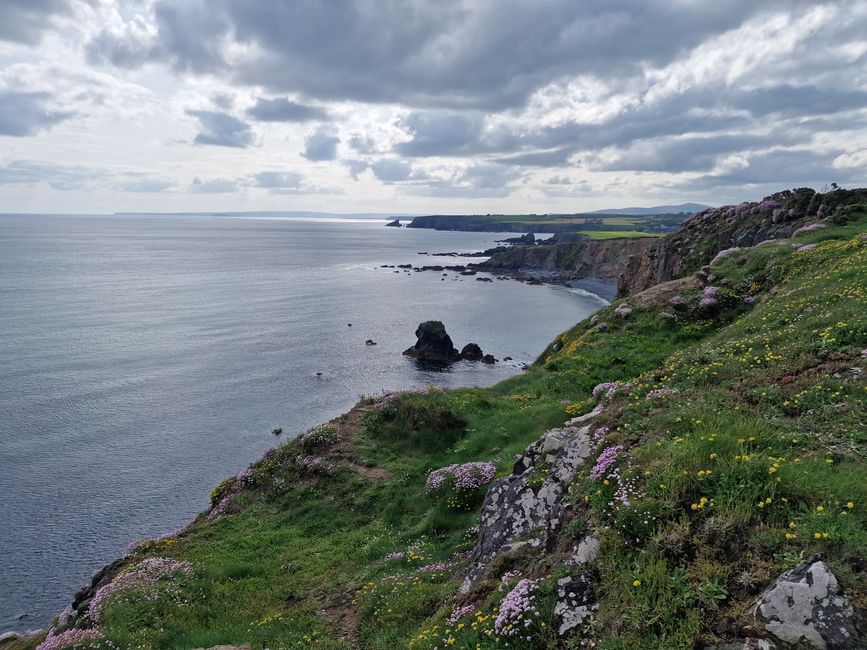
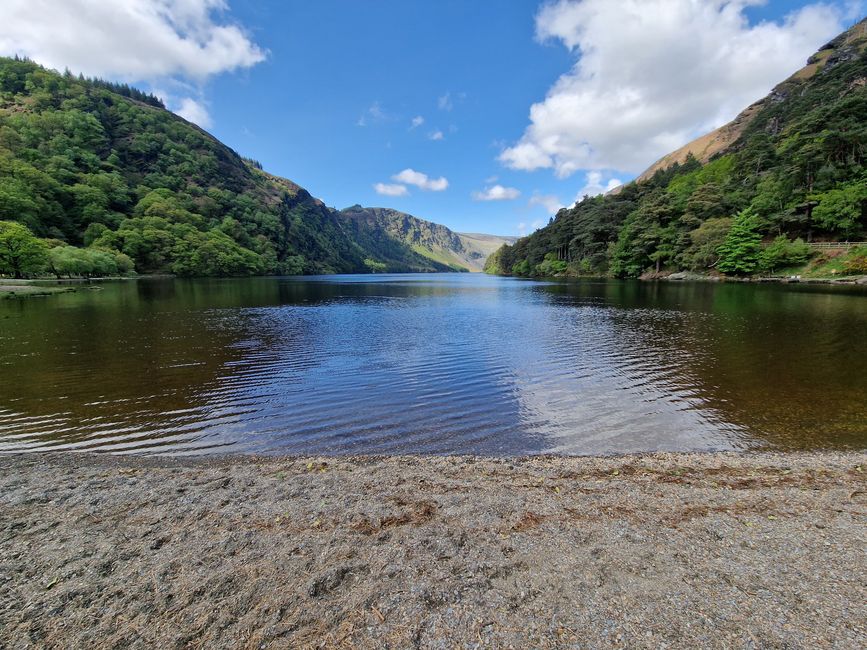
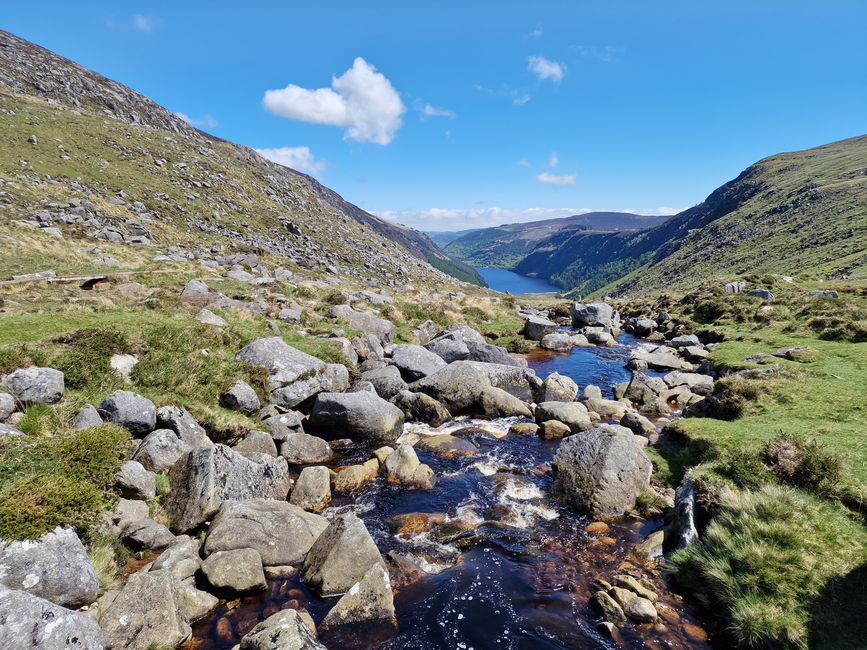
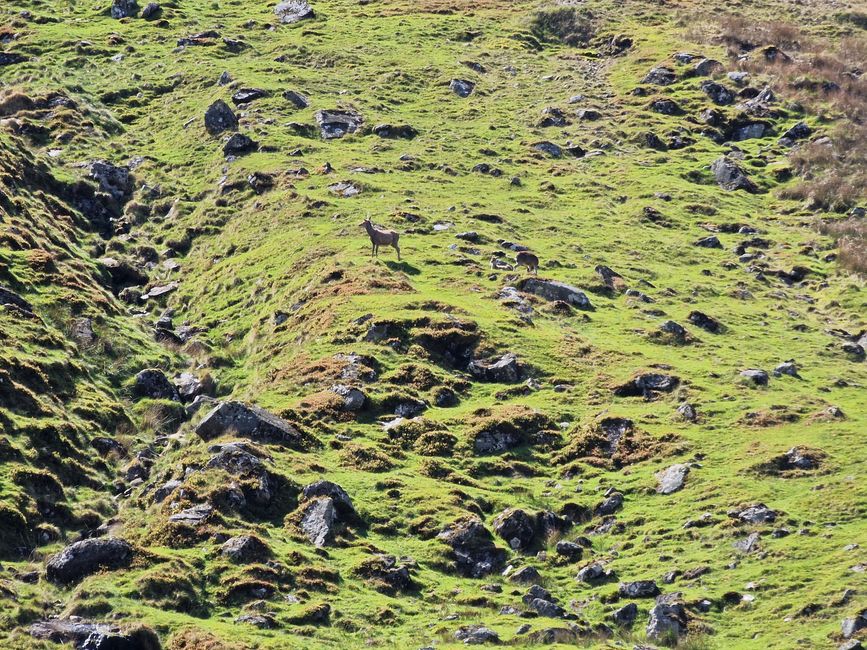
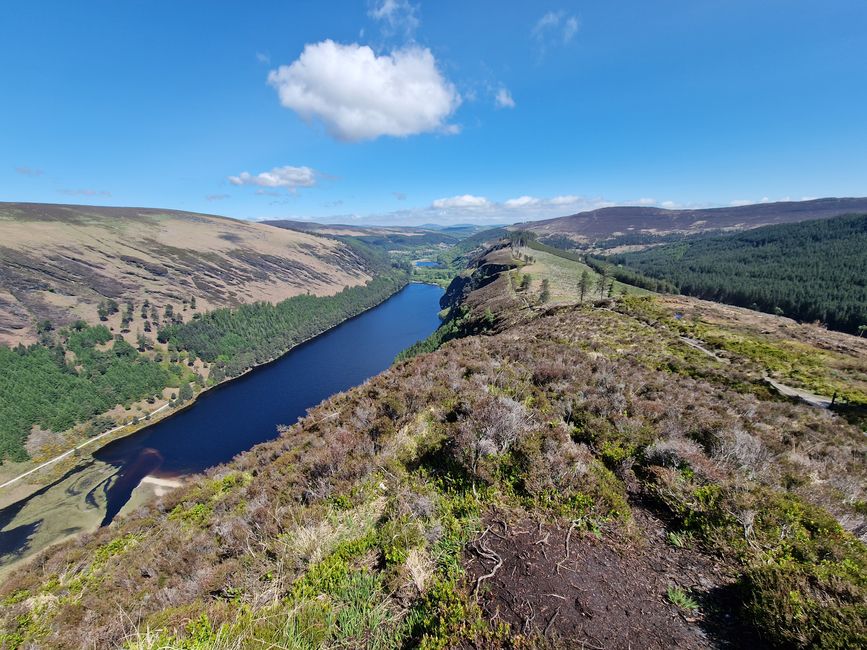
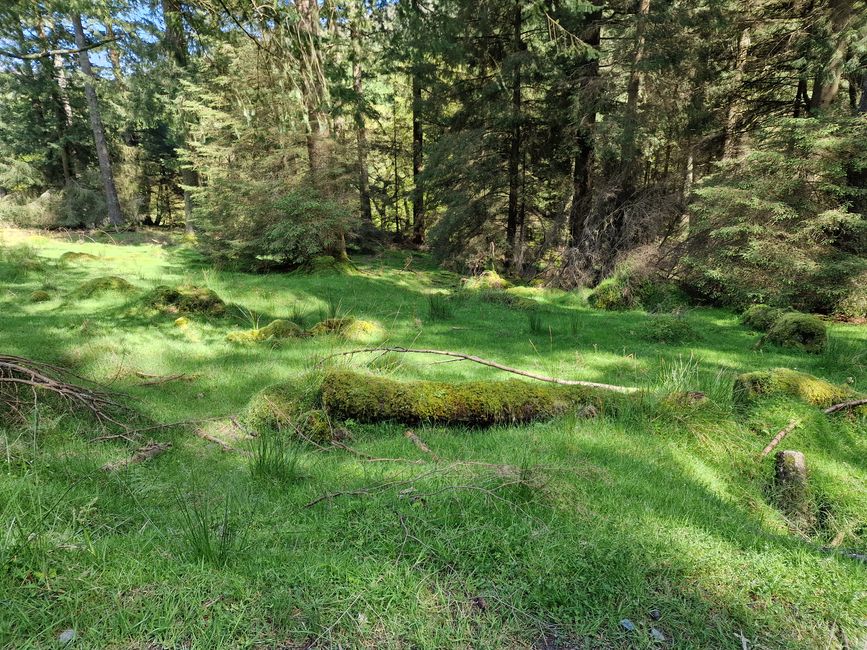
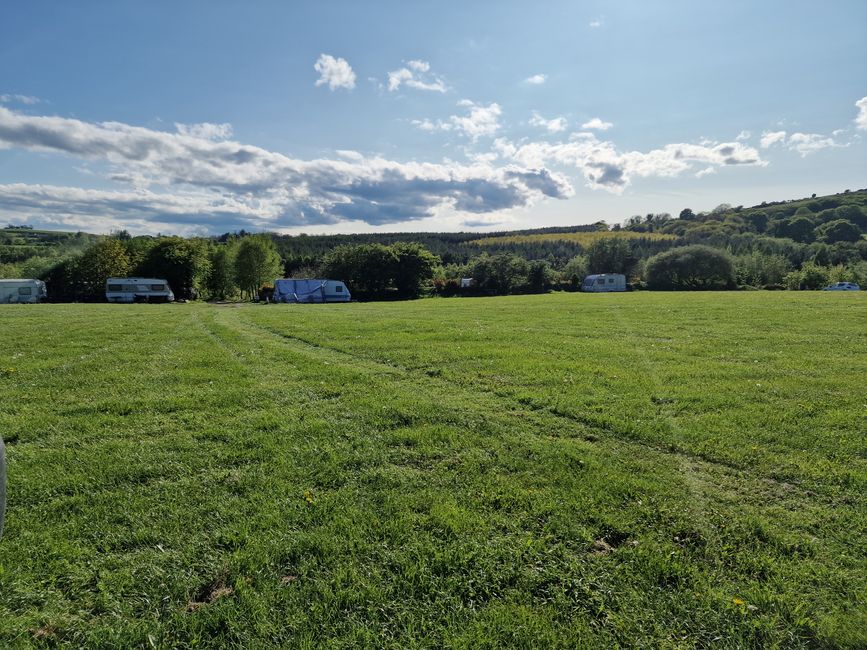
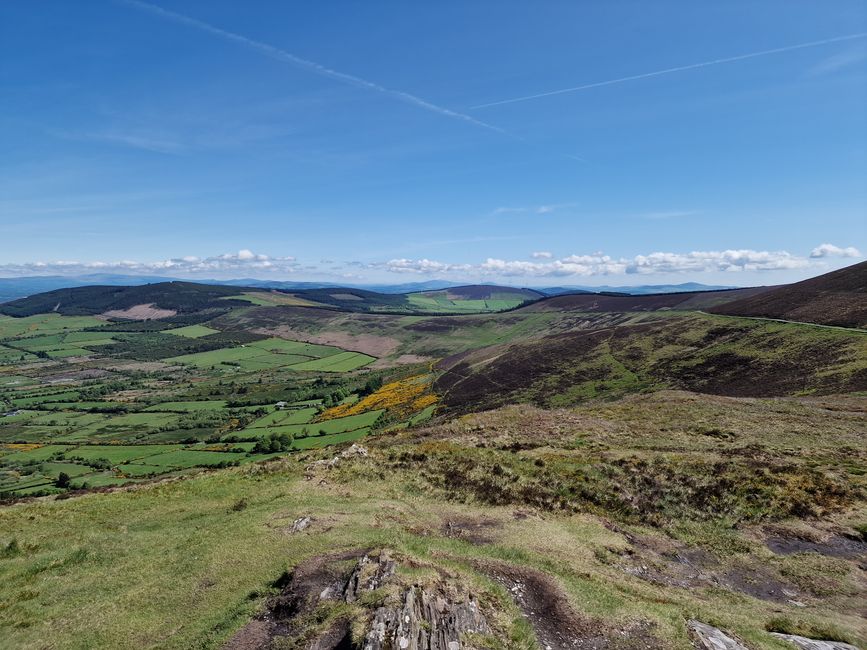
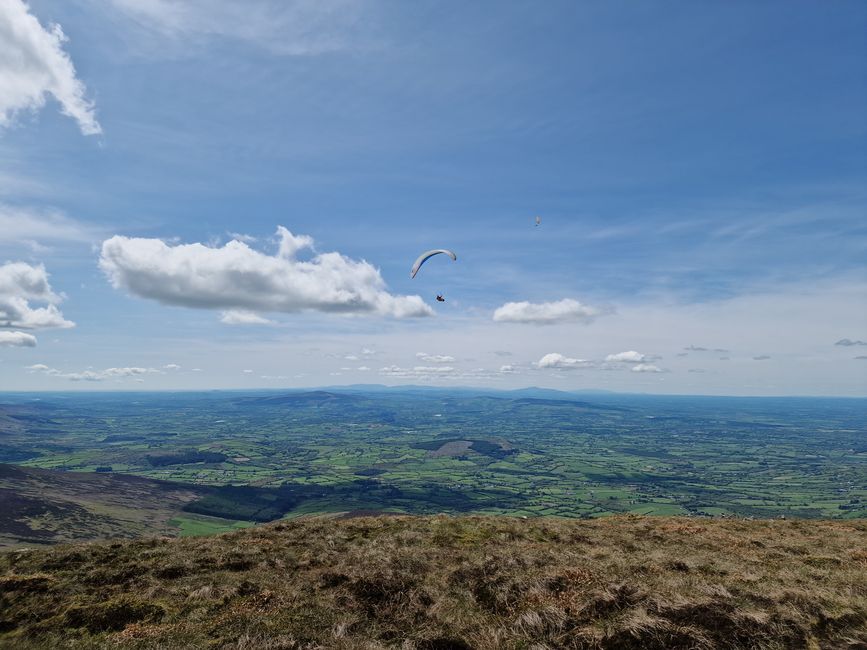
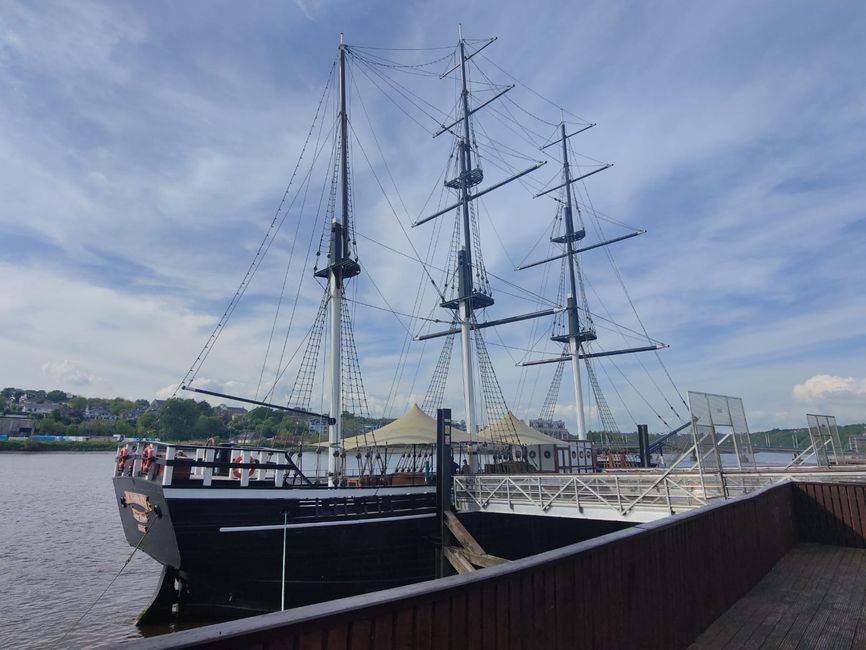
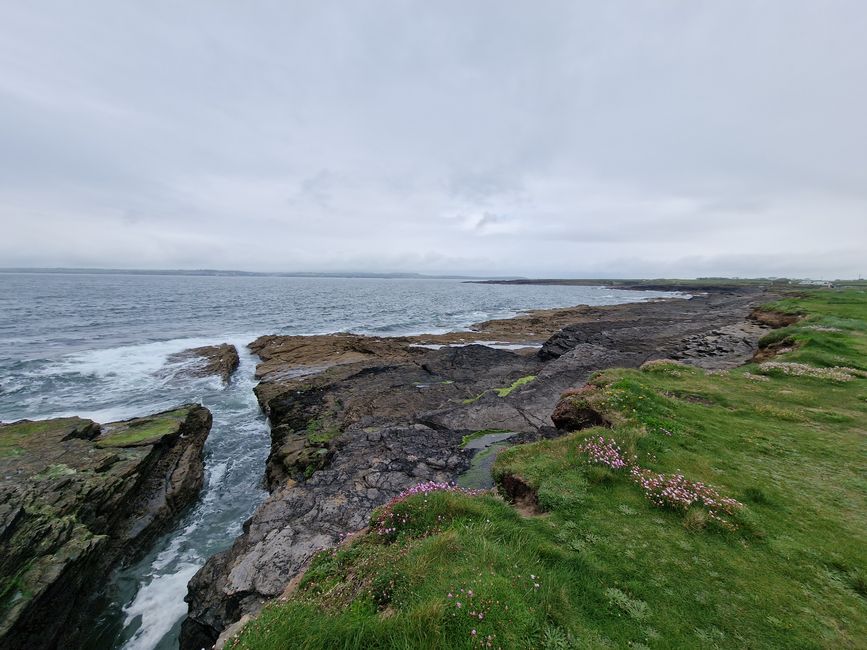
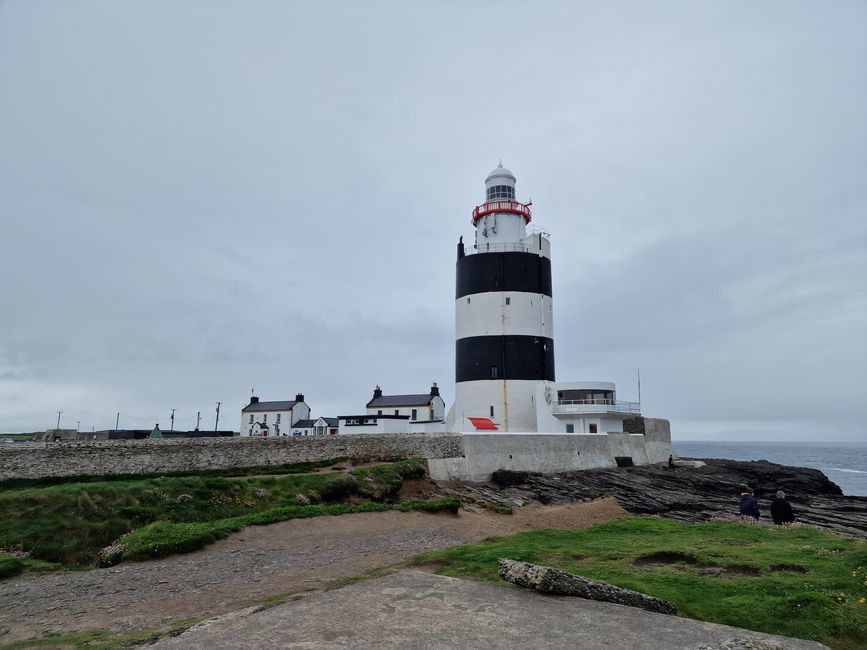
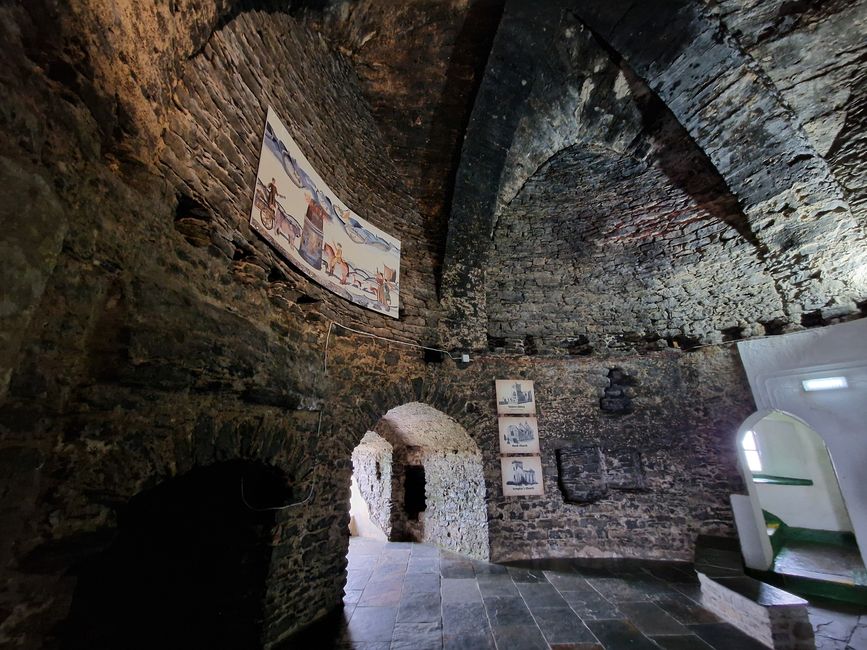
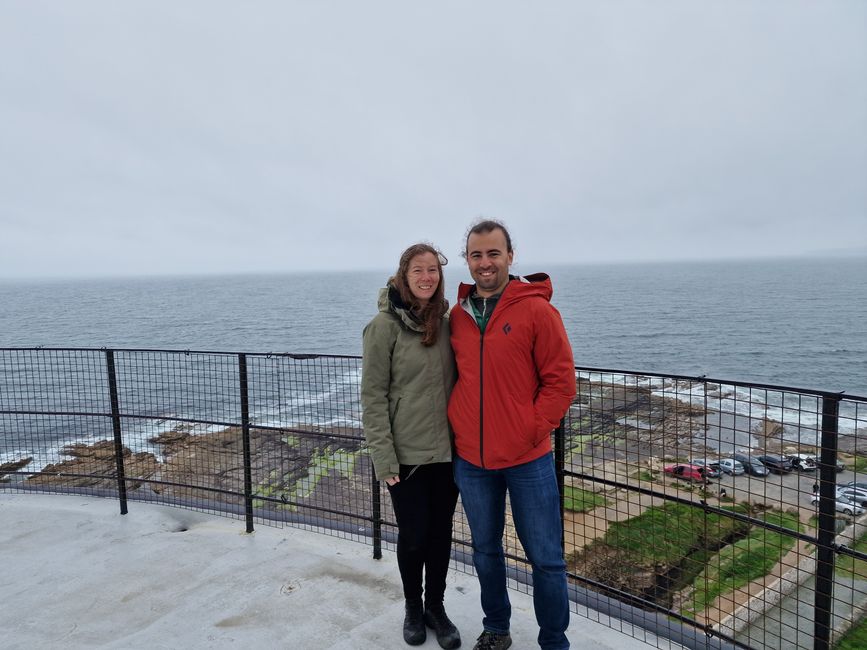
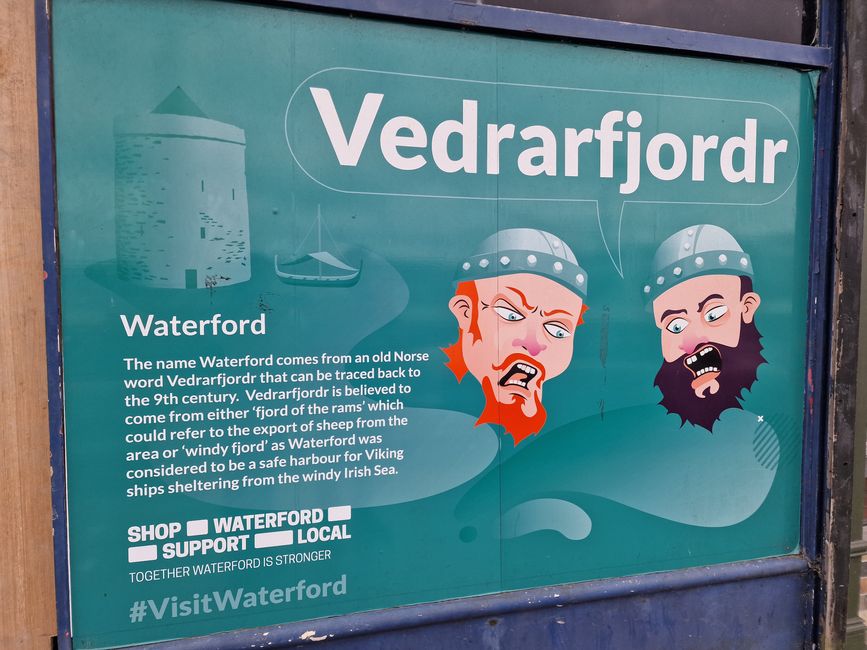
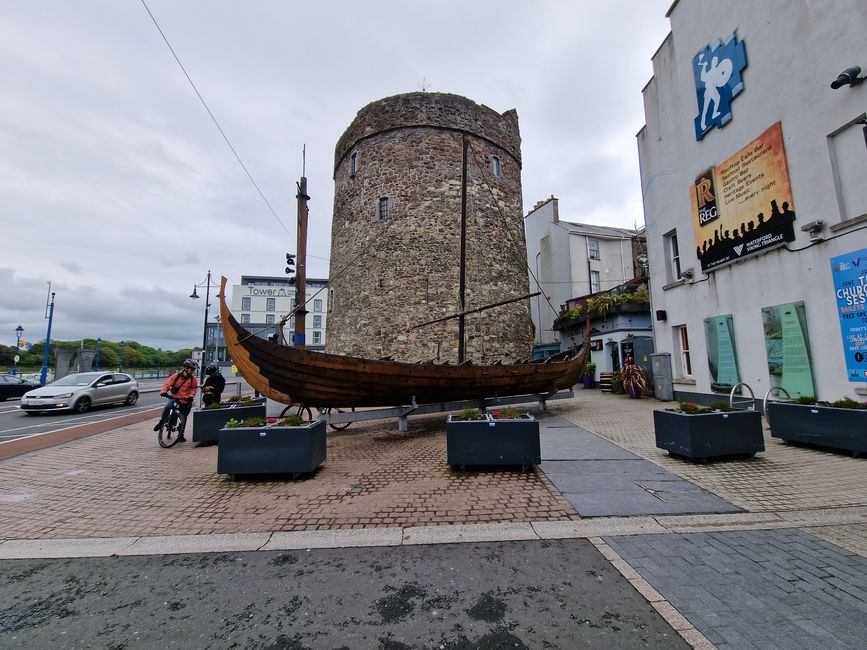
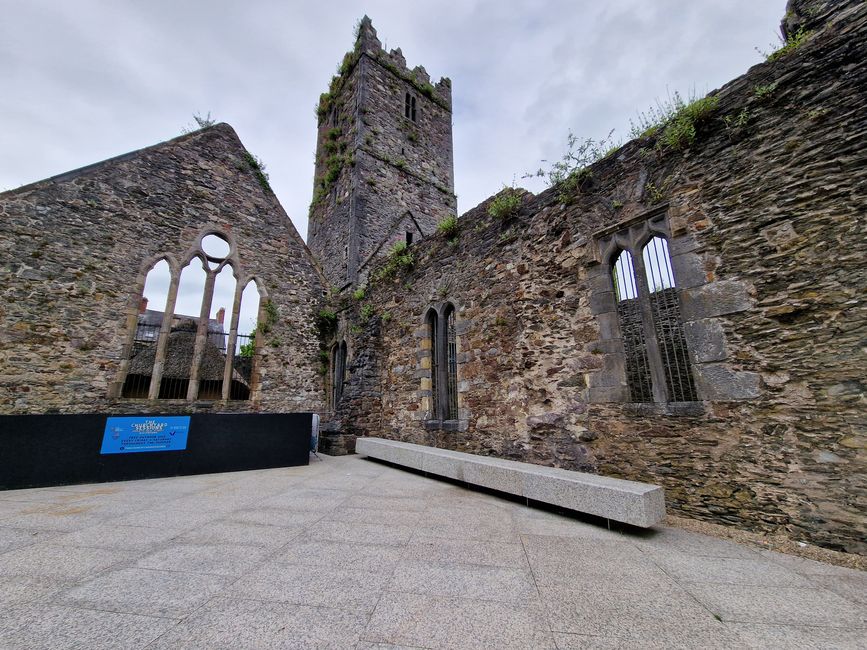
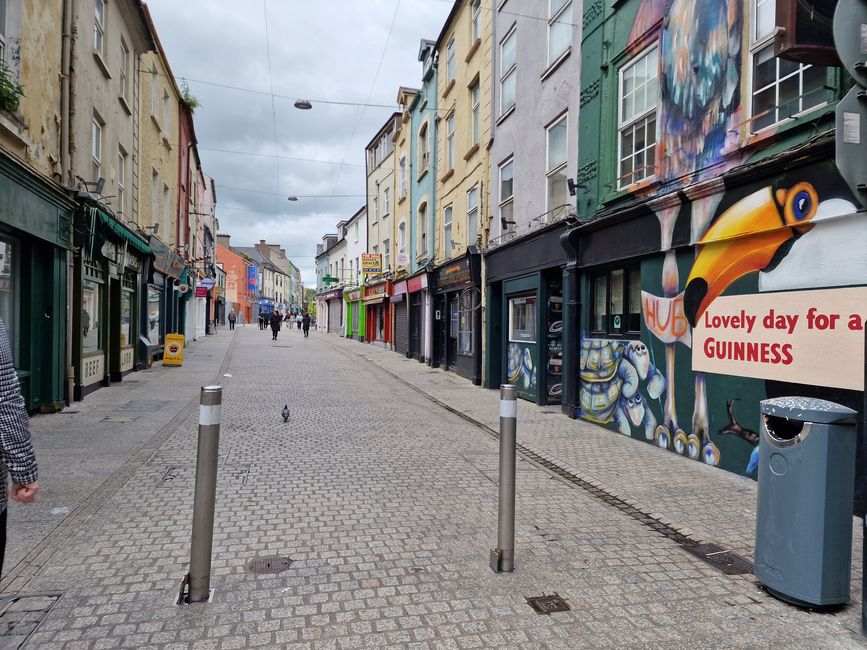
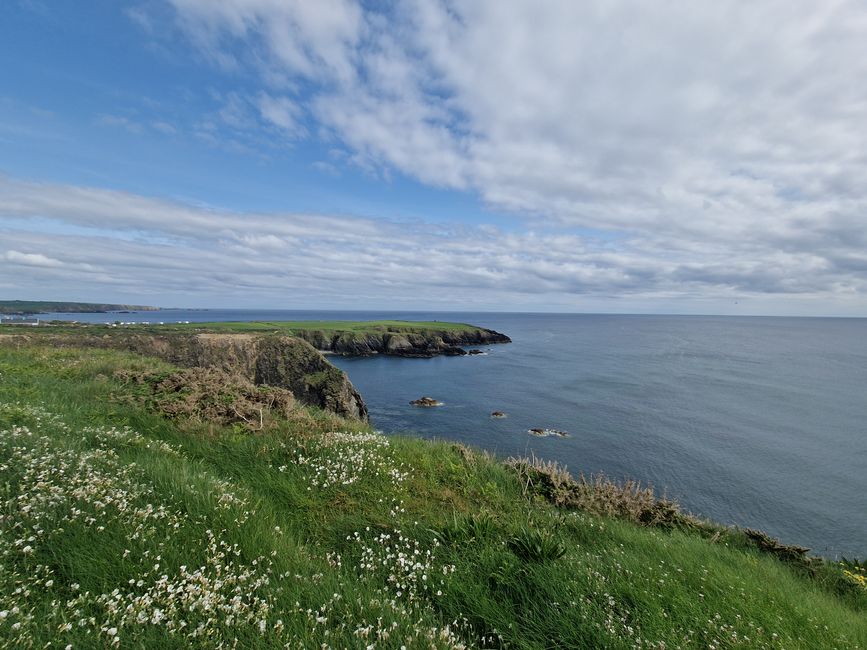
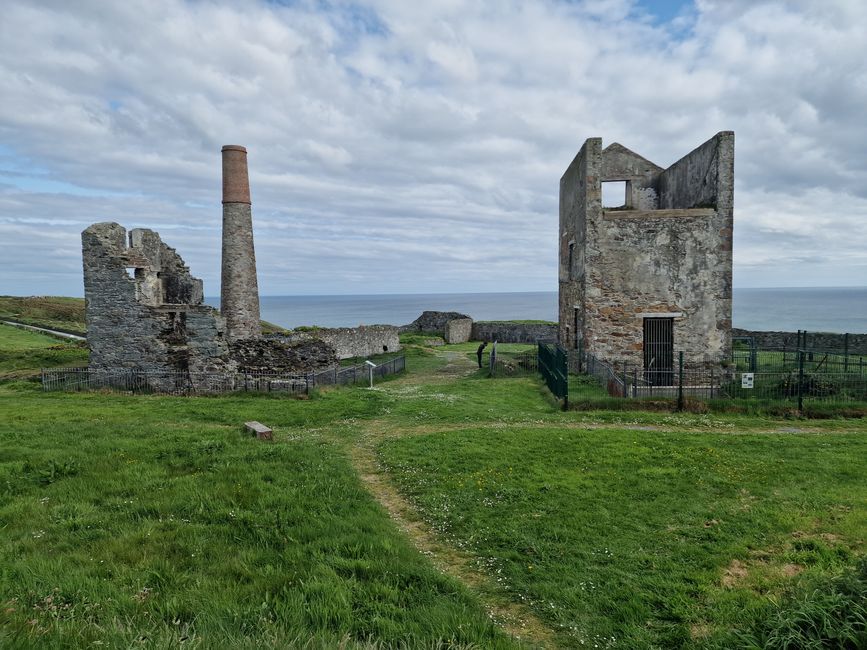
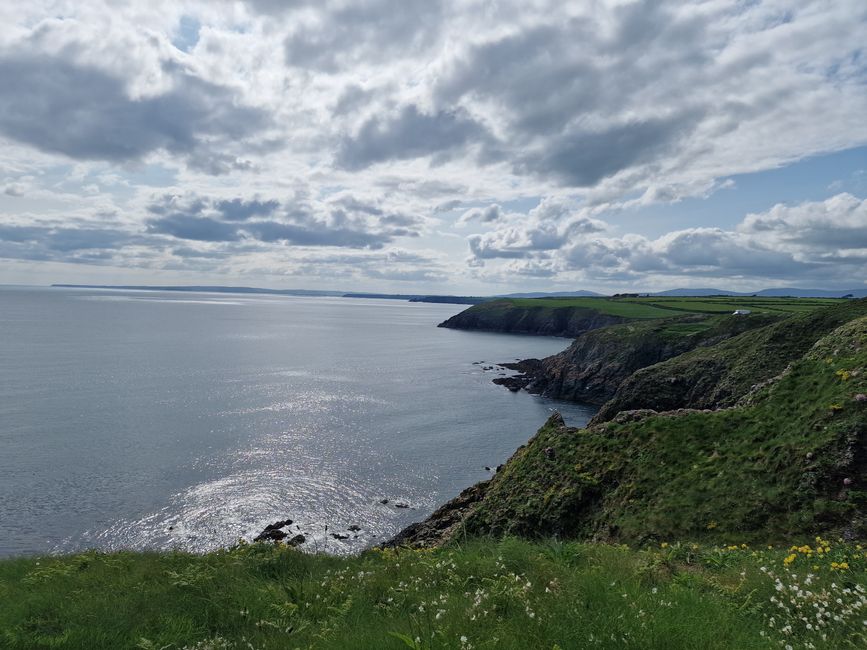
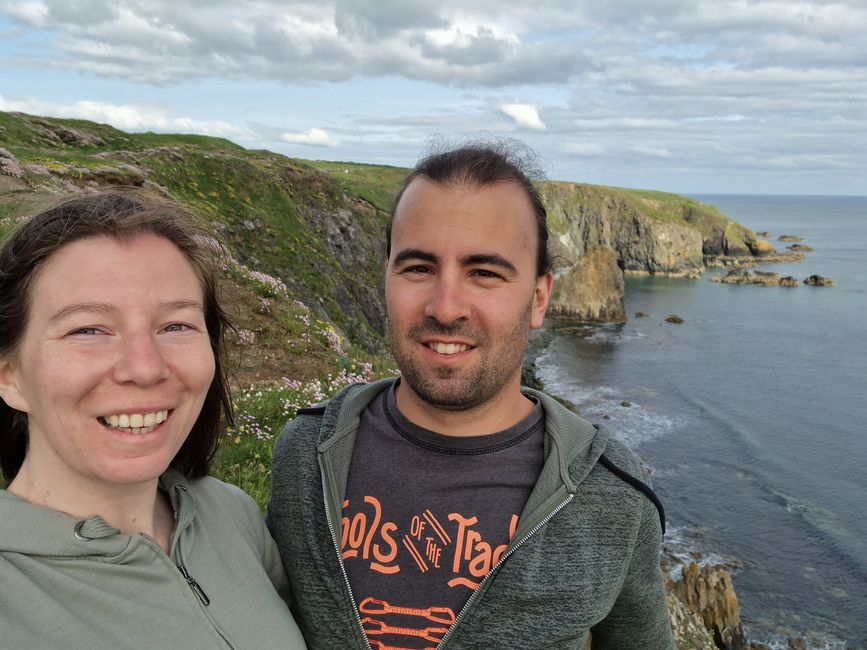
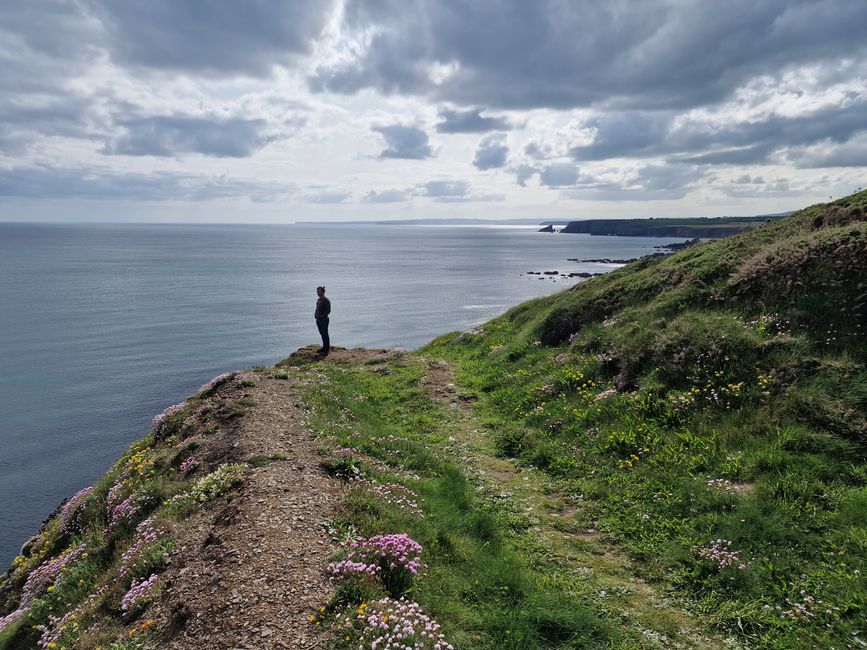
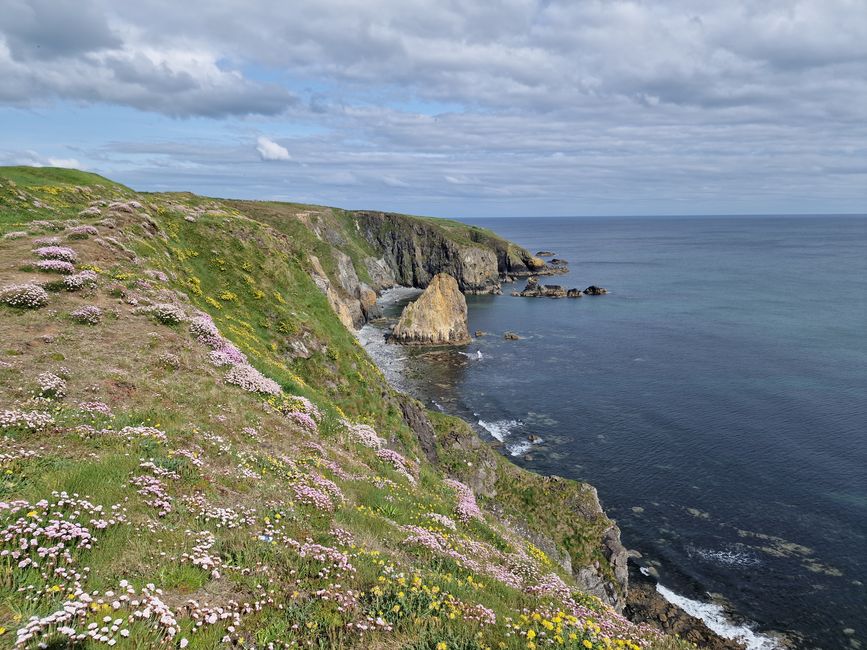
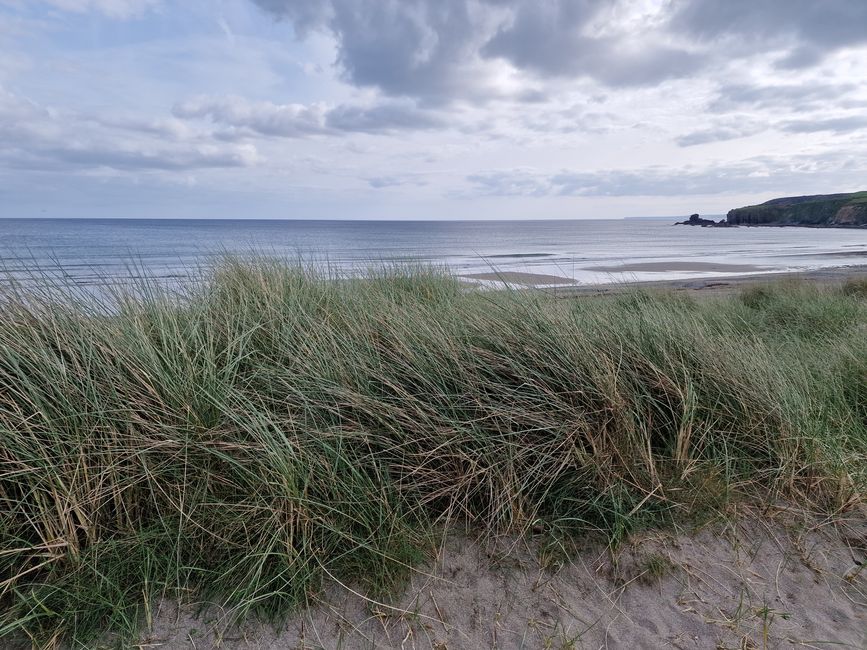
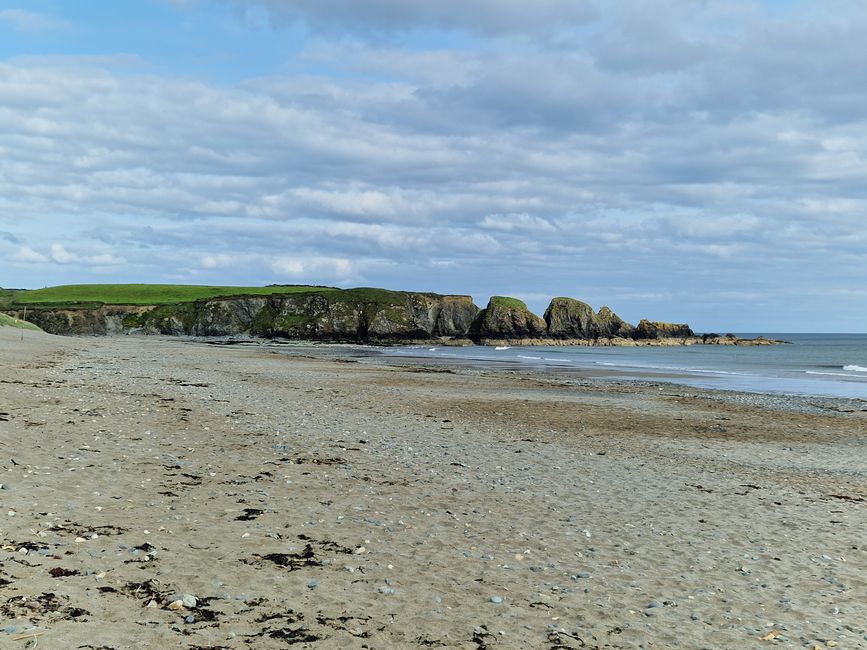
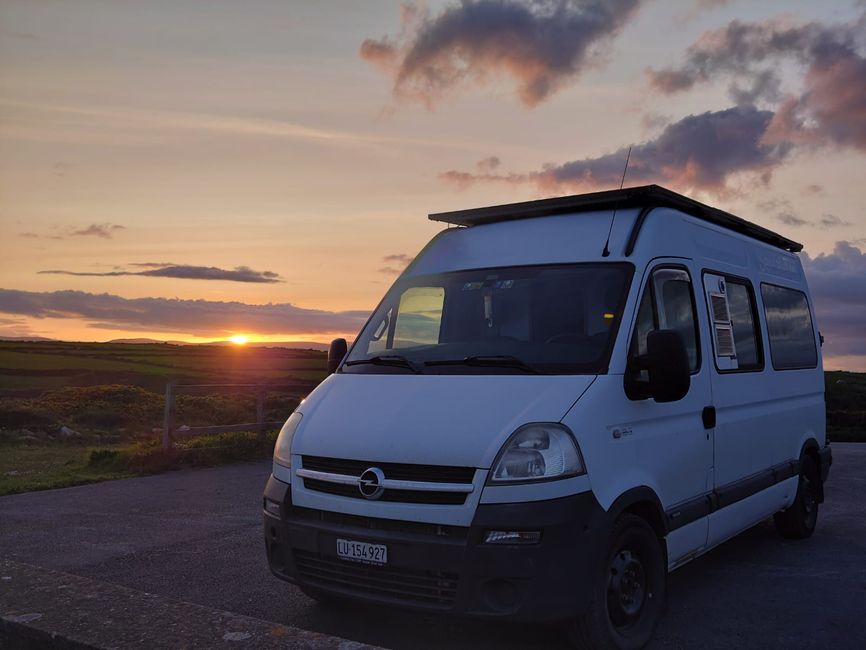
Kyerɛw wo din wɔ Newsletter no mu
On Friday morning after breakfast we checked out the hiking maps of Wicklow National Park online and decided to go for an easy hike around Glendalough Lake. We could drive to the lake with our bus and park there. We shouldered our backpack and put on our better hiking shoes since we didn't know how muddy the trail would be. By the way, the weather was again very gracious to us that day and we had sunshine all day and of course always a little wind. The nature of the park reminded us a lot of home. Lake, fir forests, roe deer, and what the Irish call mountains. Just kidding, the hiking trail first led along one side of the lake, then it climbed about 350 meters in altitude, so that we stood on the other side of the lake on the mountain without a name. We always had the lake in sight to our left as we hiked everything down again. We only saw the wild goats from a distance, but we got very close to a roe deer that was grazing just 3 meters in front of us. Of course, it took a leap into the distance as soon as we got closer (just for your information: we simply continued walking on the trail, we didn't intend to get closer to the animal itself). Nevertheless, the animals here unfortunately seem to have lost their fear of humans.
After about 3 hours, we were back down at the car park and treated ourselves to an ice cream and then drove about 30 minutes to our next campsite in a small town called Hacketstown. It was a huge green field with many fixed mobile homes but no campers. Apart from one family camping in tents, we were the only ones there. The old man who greeted us was very accommodating, let us choose any pitch, and then chopped wood and lit the boiler so that we had warm water for showers. We enjoyed the quiet evening by ourselves and when we couldn't find an owner the morning before we left, we called a mobile number. The person on the phone said that if we were satisfied, we could just put a 20 Euro note in the mailbox. Very trustworthy. In case anyone wants to go there and spend a quiet evening during the off-season: Camping Raven's Rest in Hacketstown. According to the old man, the campsite is particularly popular with families with children.
On Saturday, our plan was to drive further south. Since the weather was still beautiful, Lukas wanted to visit a hill where a paragliding take-off area was marked. So we drove up the narrow roads and when we arrived, there was no sign of any paragliding. But after about 10 minutes, we saw three paraglider pilots hiking up the hill on the other side. So, we decided to follow them. The trail up was a bit steep even for us, but about 15 minutes before reaching the top, a Volkswagen bus passed us. The driver stopped and offered us a short ride. Of course, we didn't refuse. Once we reached the top, we had our lunch and enjoyed the view. As we later found out, the mountain was Mount Leinster, at 794 meters above sea level. From there, we could even faintly see the sea. Then Lukas unpacked his glider and after two or three quick steps, he was airborne. Sarah shouldered her backpack and walked back down the trail. Guess who reached the bus first? We probably would have arrived at the same time if Lukas hadn't had to pack up the glider on a sheep pasture and then walk back to the hiking trail.
After that physical activity, we continued our drive to a small town called New Ross. There, we visited a replica of a ship called Dunbrody. We explored the floating museum and had a very interesting guided tour. The ship used to be a cargo ship, transporting cotton from the United States to Ireland. Normally, it would return empty. But in the 19th century, as a result of the famine, the number of emigrants from Ireland skyrocketed, and the ship also brought people to America. More than 250 people per journey had to find their place below deck. They were allowed on deck only in groups and for only 30 minutes per day. They had to cook their own meals on deck, and that was only possible in good weather. And all of this for 7 weeks. It's hard for us to imagine. The ship's captain, John W. Williams, was known as a very humane and helpful person. It was important to him that the passengers were relatively well during the voyage. Unfortunately, this was not the case for all ships that sailed to America during that time. Many people died during the journey on other ships. That's why these ships were often called "Coffin Ships". It's a really dark chapter in Irish history.
For dinner, we went to a small establishment in the village itself called Ann McDonald's Café and had the best fish and "proper homemade cut chips" we had until then. They were really good. We had a beer in two different pubs, but despite it being Saturday night, the atmosphere was quite empty.
This Sunday morning, we set off to visit the Hook Lighthouse, the second oldest lighthouse still functioning in its original capacity. The tower, as it stands today, was built in the 13th century and operated by monks. They were tasked with maintaining the beacon fire for 24 hours, which meant climbing over 170 steps every day with sacks full of coal. By the way, the interior of the building clearly reflects its early medieval construction. Did you know that each lighthouse is painted a different color and has its own light frequency? However, with modernization, the monks disappeared. Eventually, the fire was replaced by gas lighting, in 1972 the lighthouse was electrified, and in 1996 it was finally automated, and the last lighthouse keeper left. The tower itself has withstood severe storms for over 800 years. The highest wave that hit the tower was measured at 19 meters.
After this exciting visit, we drove for about an hour to Ireland's oldest city, Waterford. As we usually do, we didn't extensively research what we might expect. When Sarah heard that it was the oldest city, she hoped for a charming town with an intact old town. Unfortunately, that wasn't the case. Only a few buildings testified to very ancient times when the city was even occupied by Vikings. One of the towers is even dedicated to one of the Danes, Ragnall. However, there was not much else for us to see there, so after a coffee we continued further south until we reached the coastline. We are currently in a car park by the sea, along the Copper Coast UNESCO Global Geopark. It's a truly beautiful place, the kind of images you always see of Ireland on the internet. It's so nice to actually experience it in person and to experience the wildness of the Atlantic. The sea is very calm, but the wind is strong. What will it be like on the west coast? Now we are enjoying the evening, listening to the sound of the sea and the wind.
On Friday morning after breakfast we checked out the hiking maps of Wicklow National Park online and decided to go for an easy hike around Glendalough Lake. We could drive to the lake with our bus and park there. We shouldered our backpack and put on our better hiking shoes, as we didn't know how muddy the trail would be. By the way, the weather was very gracious to us that day and we had sunshine all day and of course always a little wind. The nature of the park reminded us a lot of home. Lake, fir forests, roe deer, and what the Irish call mountains. Just kidding, the hiking trail first led along one side of the lake, then it climbed about 350 meters in altitude, so that we stood on the other side of the lake on the mountain without a name. We always had the lake in sight to our left as we hiked everything down again. We only saw the wild goats from a distance, but we got very close to a roe deer that was grazing just 3 meters in front of us. Of course, it took a leap into the distance as soon as we got closer (just for your information: we just continued walking on the trail, we didn't intend to get close to the animal itself). Nevertheless, the animals here unfortunately seem to have lost their fear of humans.
After about 3 hours, we were back down at the car park and treated ourselves to an ice cream and then drove about 30 minutes to our next campsite in a small town called Hacketstown. It was a huge green field with many fixed mobile homes but no campers. Apart from one family camping in tents, we were the only ones there. The old man who greeted us was very accommodating, let us choose any pitch, and then chopped wood and lit the boiler so we had warm water for showers. We enjoyed the quiet evening by ourselves and when we couldn't find an owner the morning before we left, we called a mobile number. The man said, if we were satisfied, we should just put a 20 Euro note in the mailbox. Very trustworthy. In case anyone wants to go there and spend a quiet evening in the middle season: Camping Raven's Rest in Hacketstown. According to the old man, the campsite is particularly popular with families with children.
On Saturday, our plan was to drive a bit further south. Since the weather was still beautiful, Lukas wanted to visit a hill where a paragliding take-off site was marked. So, we drove up the narrow roads and on-location, there was no sign of any paragliding. But after about 10 minutes, we saw three paraglider pilots hiking up the hill on the other side. So, we decided to follow them. The trail up was a bit steep even for us, but about 15 minutes before reaching the top, a Volkswagen bus passed us. The driver stopped and offered us a short ride. Of course, we didn't say no. Once we reached the top, we had our midday meal and enjoyed the view. As we later found out, the mountain was Mount Leinster, at 794 meters above sea level. From there, we could even faintly see the sea. Then, Lukas unpacked his glider and after two or three quick steps, he was in the air. Sarah shouldered her backpack and walked back down the trail. Guess who reached the bus first? We probably would have arrived at the same time if Lukas hadn't had to pack up the glider on a sheep pasture and then walk back to the hiking trail.
After that sporting activity, we continued our drive to a small town called New Ross. There was a replica of a ship called Dunbrody. We visited this floating museum, and we had a very interesting tour of it. The ship was actually a cargo ship. It transported cotton from the States to Ireland and would usually return empty. But in the 19th century, when the number of emigrants from Ireland exploded due to the famine, the ship also carried people to America. Over 250 people per journey had to find their way below deck. On deck, they were only allowed in groups, and that only for 30 minutes a day. They had to cook for themselves on deck, and that only worked in good weather. And all of that for 7 weeks. For us, hardly imaginable. The captain of the ship, John W. Williams, was considered a very humane and helpful person. For him, it was important that the passengers were at least reasonably well during the voyage. Unfortunately, that cannot be said for all ships that sailed to America during that time. Many people died on other ships during the voyage. That's why these ships often bore the name 'Coffin Ships'. A truly dark chapter in Irish history.
For our evening meal, we went to a small establishment in the village itself, Ann McDonald's Café, and ate the best fish we had had until then, served with "proper homemade cut chips". They were really good. We had a pint in two different pubs, but despite it being Saturday evening, the place was quite empty.
Today, Sunday morning, we set off to visit the Hook Lighthouse, the second oldest still operational lighthouse in the world. The tower, as it stands today, was built in the 13th century and operated by monks. They were tasked with feeding the beacon for the entire 24 hours, which involved climbing more than 170 stairs every day with sacks of coal. By the way, inside the building you can see very clearly that the construction dates back to the early Middle Ages. Did you know that every lighthouse is painted in a different color and has its own light frequency? However, with modernization, the monks disappeared. Eventually, the fire was replaced by gas lighting, in 1972 the tower was electrified, and in 1996 it was finally automated, and the last lightkeeper left. The tower itself has withstood heavy storms for over 800 years. The highest wave ever measured here that hit the tower was 19 meters high.
After this exciting visit, we drove for about an hour to Waterford, Ireland's oldest city. Being our usual selves, we didn't extensively research what we might expect. When Sarah heard that it was the oldest city, she hoped for a charming place with an intact old town. Unfortunately, that was not the case. Only a few buildings still bear witness to very ancient times when the city was even occupied by Vikings. One of the towers is even dedicated to one of the Danes, Ragnall. But for us, there wasn't much else to see there, so after a cup of coffee, we drove further south until we reached the coast. Right now, we are in a parking lot right by the sea, along the Copper Coast UNESCO Global Geopark. It's a truly beautiful place, these are the images you always see of Ireland on the internet. It's so nice to actually experience it and enjoy the wildness of the Atlantic. The sea is very calm, but the wind is quite strong. How will it be on the west coast? Now we're enjoying the evening, listening to the sound of the sea and the wind.
Kyerɛw wo din wɔ Newsletter no mu
Anoyie (1)
Philip
Great reports Sarah! Hope the West is being kind to you! Greetings to Lukas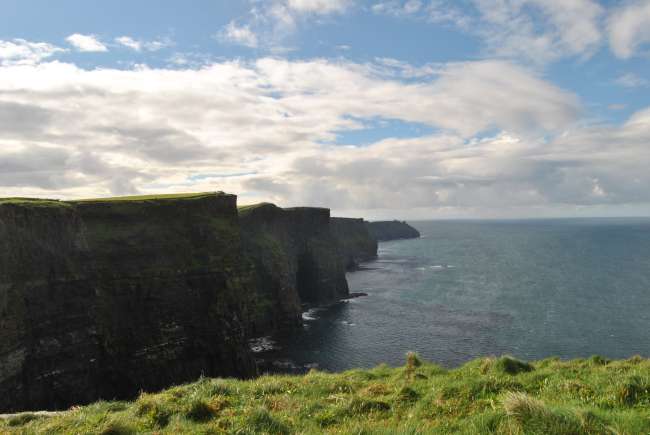
Akwantuo ho amanneɛbɔ Ireland

